Conservation Overview
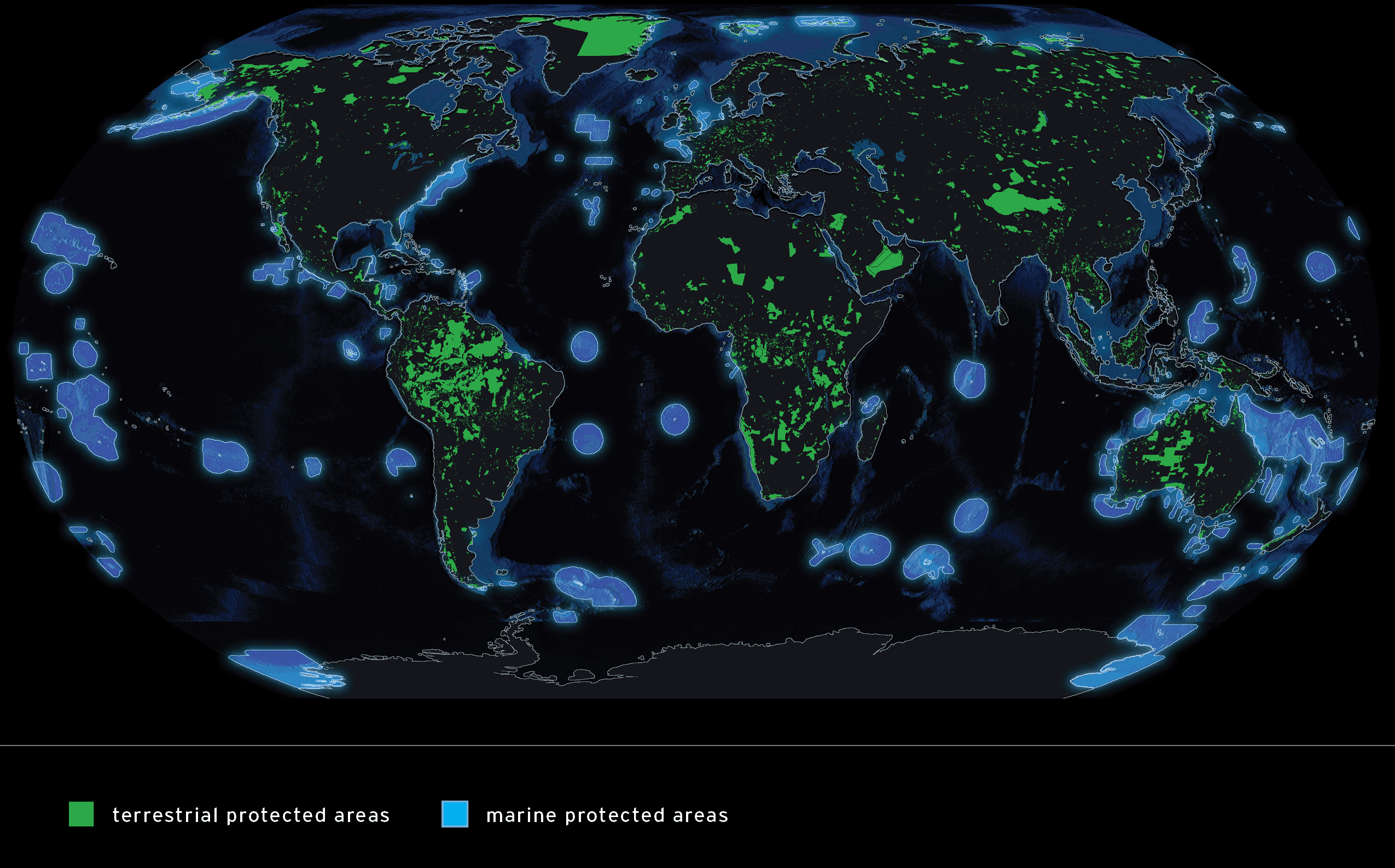
ONLY 15% OF LAND AND 7% OF OCEANS ARE CURRENTLY PROTECTED.
IF THE PLANET WARMS BEYOND 1.5°C AND BIODIVERSITY LOSS CONTINUES, MANY ECOSYSTEMS MAY BE UNABLE TO ADAPT AND FACE COLLAPSE.
With nature based solutions, we can reduce and absorb emissions while increasing protected lands and waters, helping to prevent global warming beyond 1.5 °C and reverse the loss of biodiversity.
source: World Database on Protected Areas. | “A Global Safety Net for Nature” Dinerstein et al. 2020.
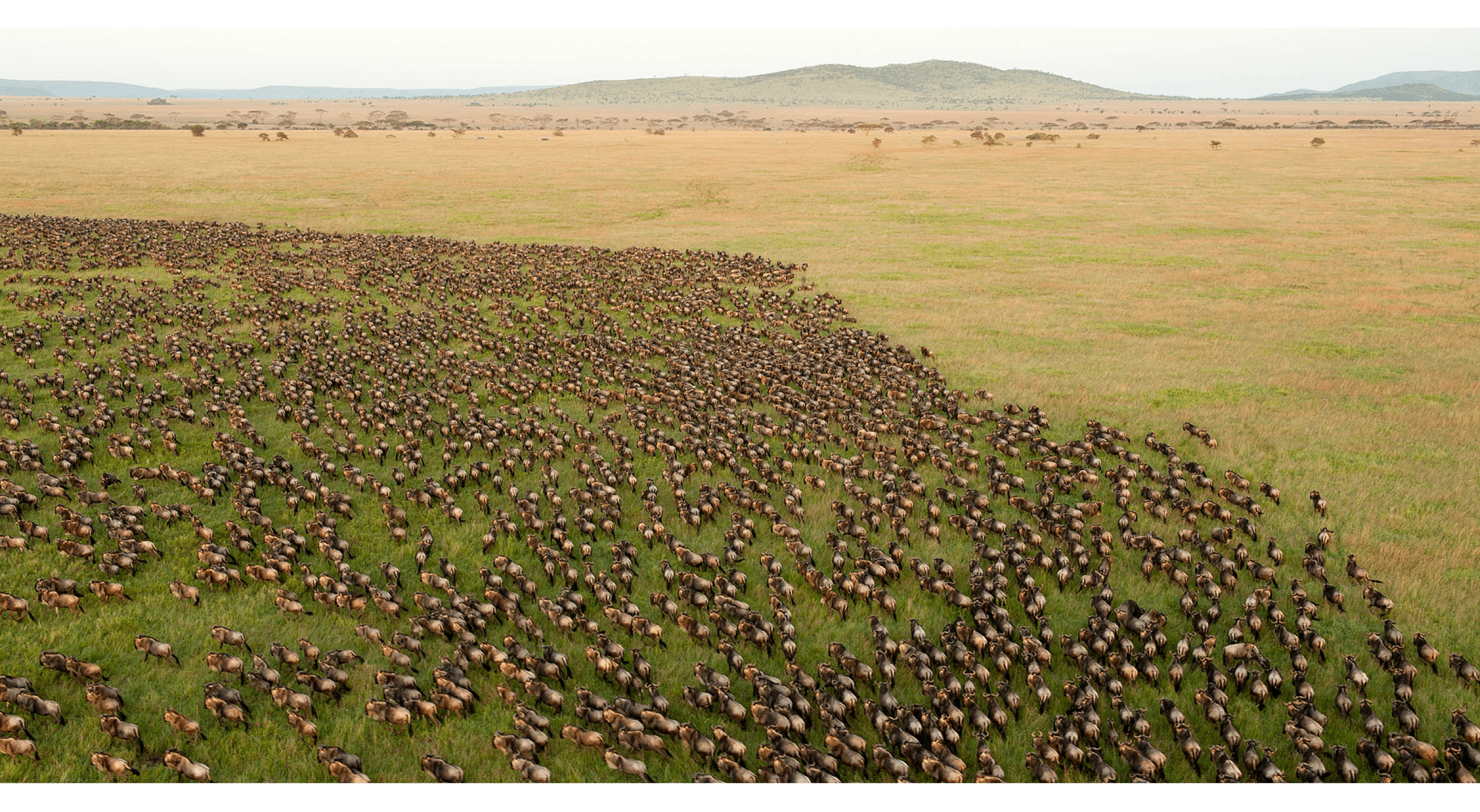
"THE CRUCIAL FACTOR IN THE LIFE AND DEATH OF SPECIES IS THE AMOUNT OF SUITABLE HABITAT LEFT TO THEM." - E.O. Wilson
"Complex life has existed on Earth for about 550 million years, and it is now threatened with the sixth mass extinction. If we fail to change course, it will take millions of years for Earth to recover an equivalent spectrum of biodiversity. Future generations of people will live in a biologically impoverished world."
Source: E.O. Wilson, Half Earth Project | “A Global Safety Net for Nature” Dinerstein et al. 2020. image: Daniel Rosengren, CC BY 4.0, via Wikimedia Commons
HALF EARTH BY 2030
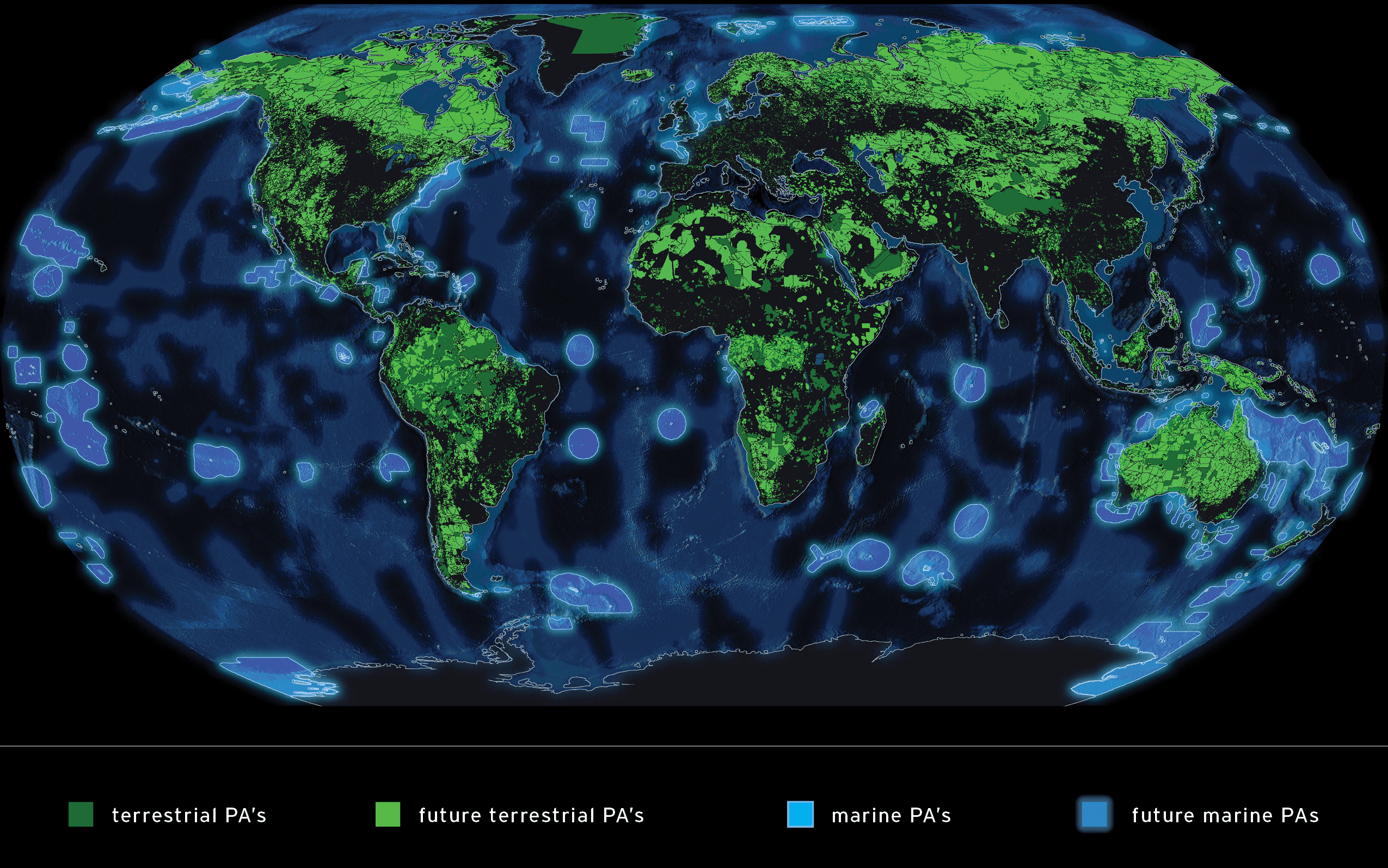
SCIENTISTS HAVE IDENTIFIED CONSERVATION THRESHOLDS TO SAVE BIODIVERSITY AND STABILIZE GLOBAL WARMING BELOW 1.5°C:
30% TERRESTRIAL PROTECTED AREAS
20% OTHER AREA-BASED CONSERVATION SUCH AS INDIGENOUS LAND TENURE
30% MARINE PROTECTED AREAS
"Many of our Earth’s large terrestrial vertebrate species are suffering range collapse and extirpation of populations and could disappear by the end of this century or sooner if intensive habitat conversion, poaching, and overhunting continue... Similar sharp declines are being observed in freshwater and marine large vertebrate species that figure prominently as protein sources for billions of people. Large mammal migrations, one of the most outstanding natural phenomena on Earth, are disrupted globally as traditional migratory routes are cut off and habitat lost."
current terrestrial and marine protected areas: World Database on Protected Areas | future terrestrial protected areas and quotation: A “Global Safety Net” to reverse biodiversity loss and stabilize Earth’s climate. Fig. 1 | future marine protected areas: 30×30: A Blueprint for Ocean Protection, University of Oxford, University of York, Greenpeace.
CRITICALLY ENDANGERED SPECIES
"IF CURRENT LAND CONVERSION RATES, POACHING OF LARGE ANIMALS, AND OTHER THREATS ARE NOT MARKEDLY SLOWED OR HALTED IN THE NEXT 10 YEARS, 'POINTS OF NO RETURN' WILL BE REACHED FOR MULTIPLE ECOSYSTEMS AND SPECIES"
Source: World Wildlife Fund. A Global Deal For Nature. Dinerstein et al. 2019.
ILLEGAL WILDLIFE TRADE
THE ILLEGAL WILDLIFE TRADE IS ESTIMATED TO BE WORTH OVER $10 BILLION, WITH 1200 RHINOS, 100 TIGERS, 3000 PRIMATES, AND 30,000 ELEPHANTS KILLED EACH YEAR.
Illegal wildlife trade is driven by high profit margins and, in many cases, the high prices paid for rare species. Vulnerable wild animals are pushed further to the edge of extinction when nature can't replenish their stocks to keep up with the rate of Human consumption.
Source: The London Zoo. WWF. RIANovosti. National Geographic. The New York Times. 2/12/15. World Wildlife Fund. BBC.
ELEPHANTS
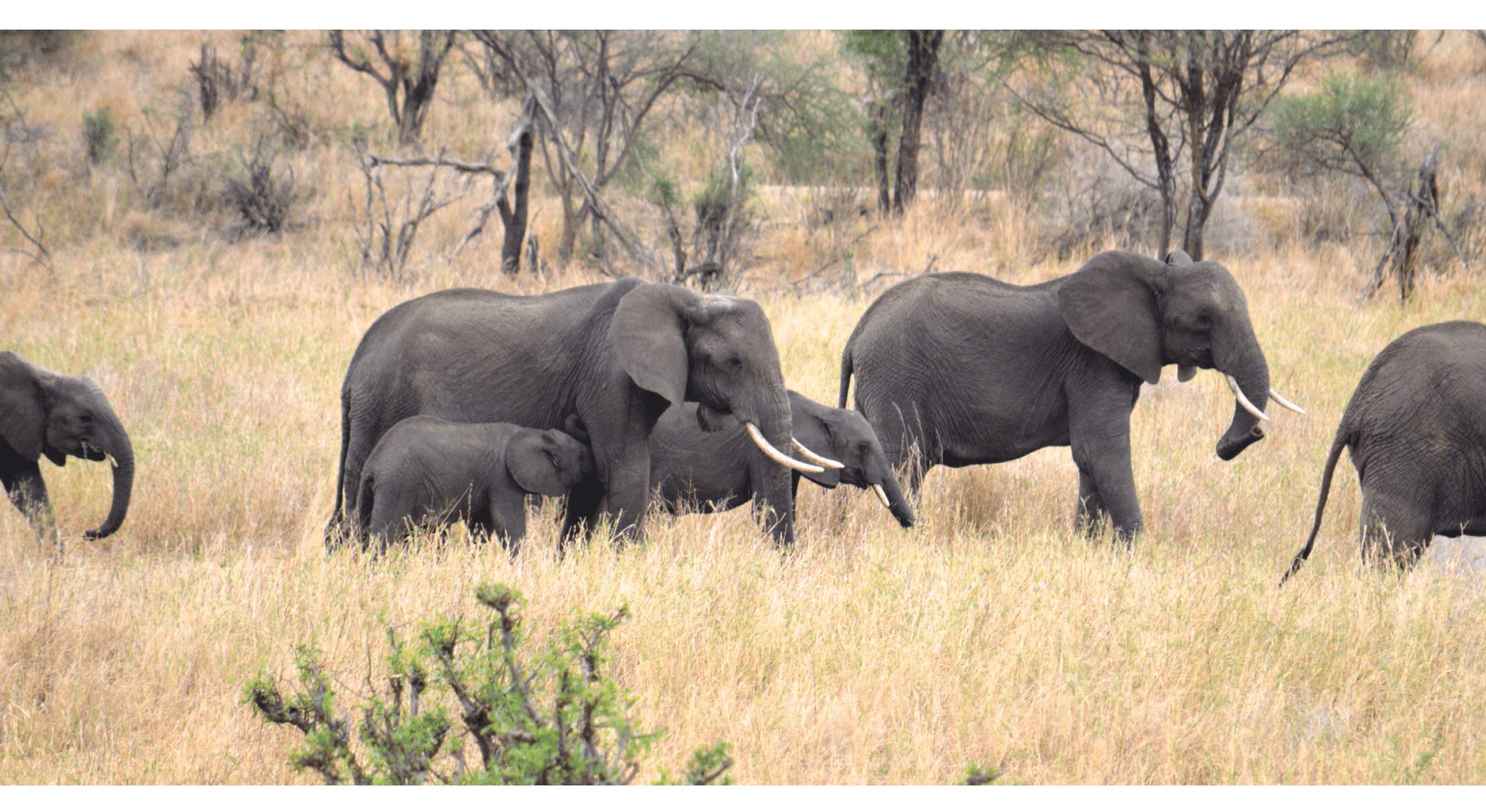
POACHERS ARE KILLING AN AVERAGE OF 96 ELEPHANTS EACH DAY, ADDING UP TO OVER 30,000 ELEPHANT DEATHS A YEAR
Historic vs Current Elephant Range
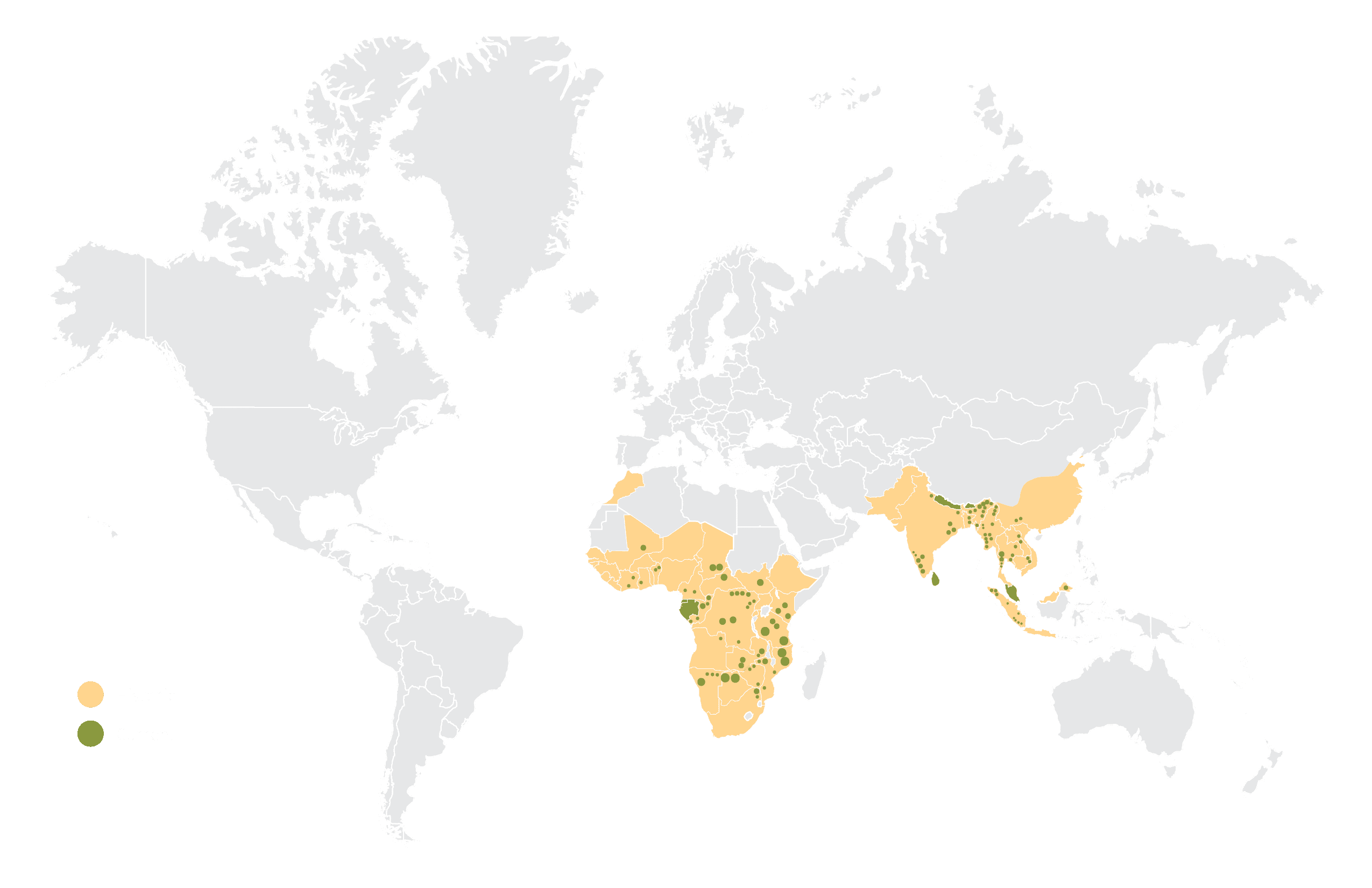
In just 1900, there were 10 million African Bush Elephants; today there are around 500,000.
Source: WWF. Africa Geographic. IUCN. Image: Elephant family in Tarangire National Park, Tanzania. Megan Coughlin. CC BY-ND 2.0
PRIMATES

EVERY ONE OF THE GREAT APE SPECIES IS AT HIGH RISK OF EXTINCTION, EITHER IN THE IMMEDIATE FUTURE OR AT BEST WITHIN 50 YEARS. EXPERTS ESTIMATE ORANGUTANS COULD BE EXTINCT IN THE WILD IN LESS THAT 25 YEARS.
Historic vs Current Range of the Great Apes
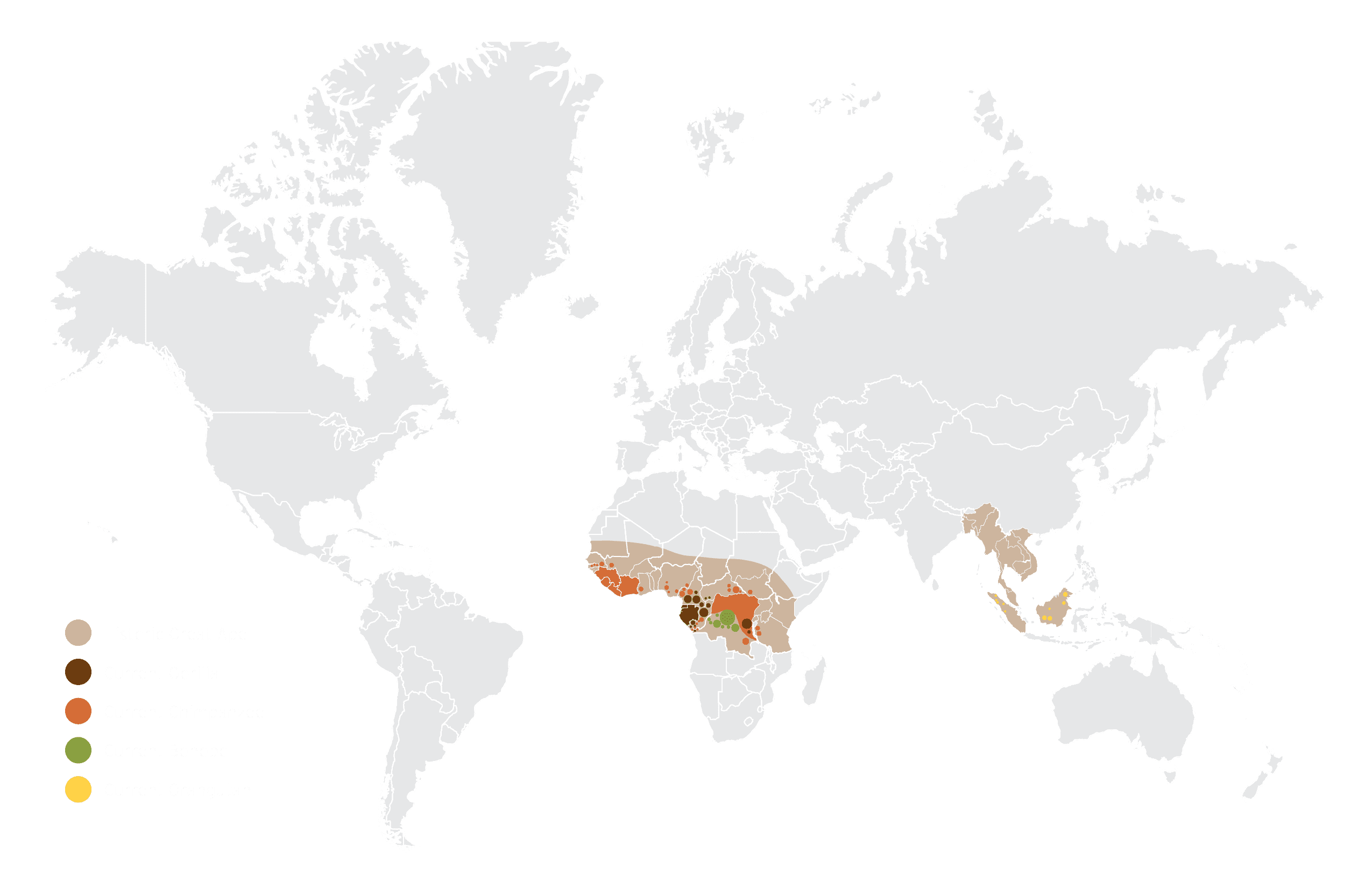
In some countries, great apes are found mainly in national parks and are the basis of a profitable tourist industry, whereas in others, such as Indonesia, more apes live outside protected areas than in them, and numbers are spiraling downwards. In several countries numbers are down to 100-200 individuals, and for some it is too late.
Sources: Richard Ellis, No Turning Back. Chimp Sanctuary. Orangutan Conservancy. WWF. www.outrop.com. Caldecott, Julian Oliver. World Atlas of Great Apes and Their Conservation. Berkeley: U of California, 2005. Print. UN.
RHINOCEROS
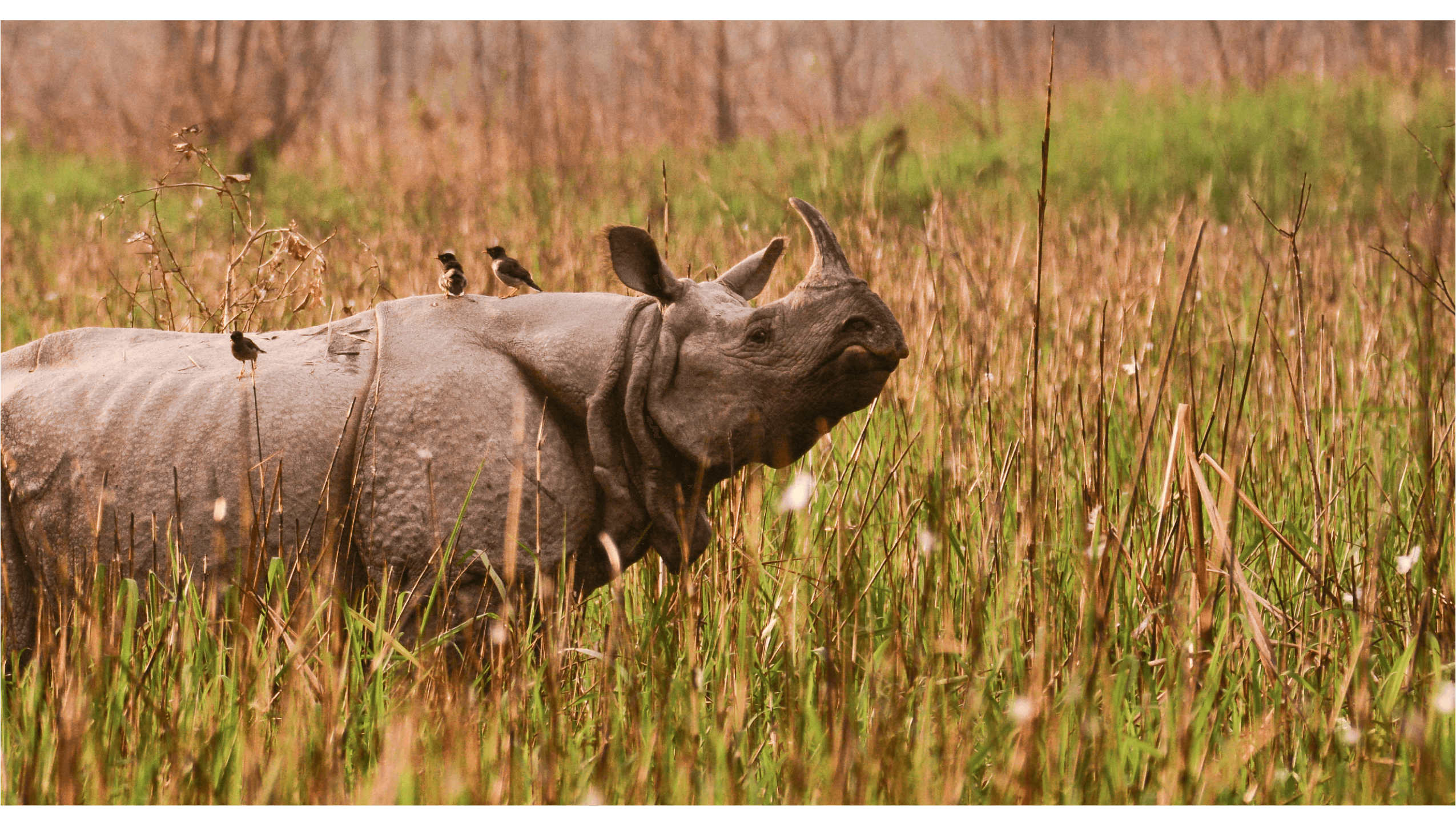
95% OF ALL THE RHINOS IN THE WORLD HAVE NOW BEEN KILLED.
Historic vs Current Rhino Range
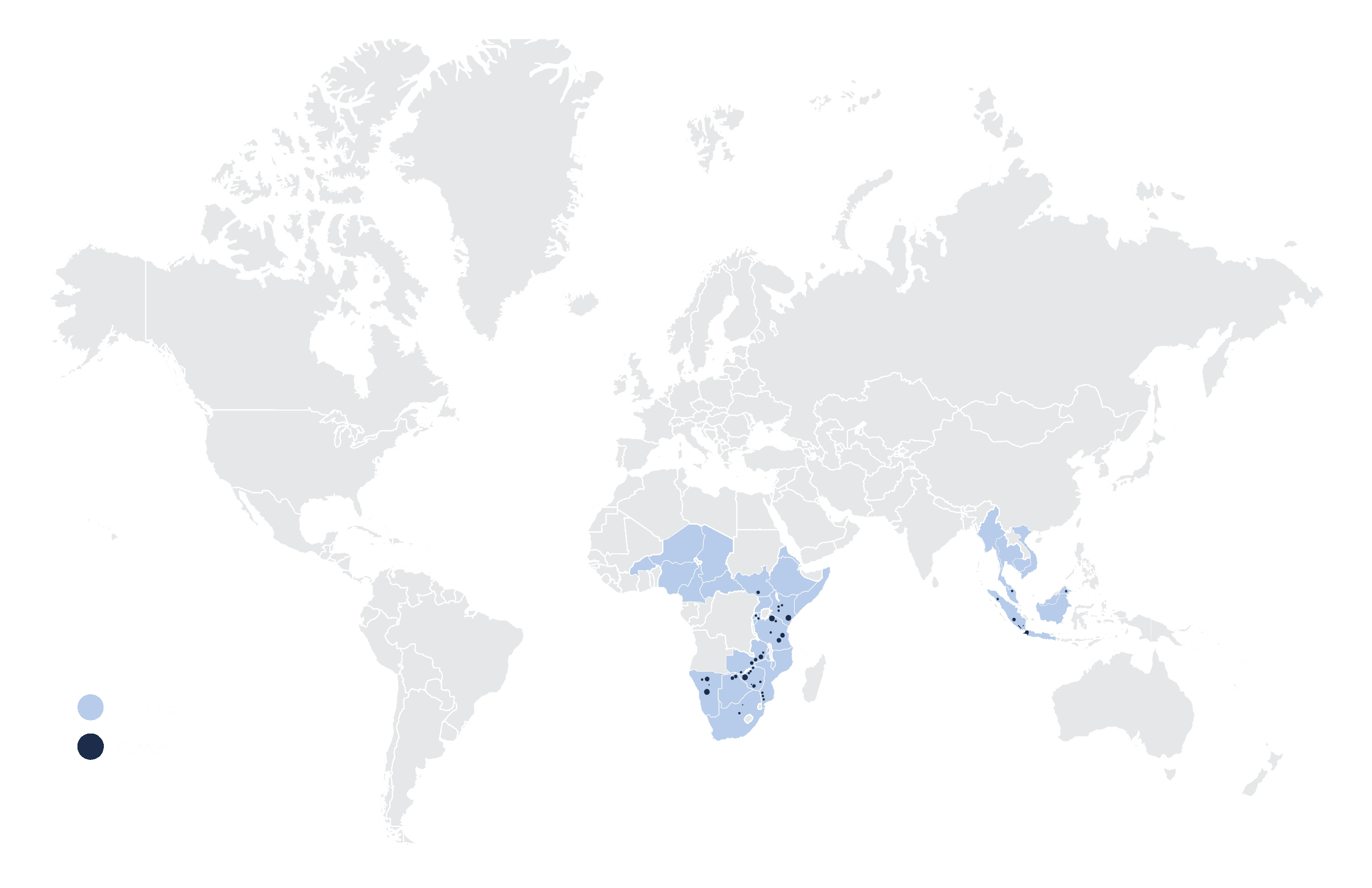
At the beginning of the 20th century there were 500,000 rhinos; today, there are fewer than 29,000 rhinos surviving in the wild.
Source: World Wildlife Fund. Image: The greater one-horned rhinoceros at Orang Tiger Reserve, Assam, India. Nejib Ahmed, CC BY-SA 4.0 via wikimedia commons.
TIGERS
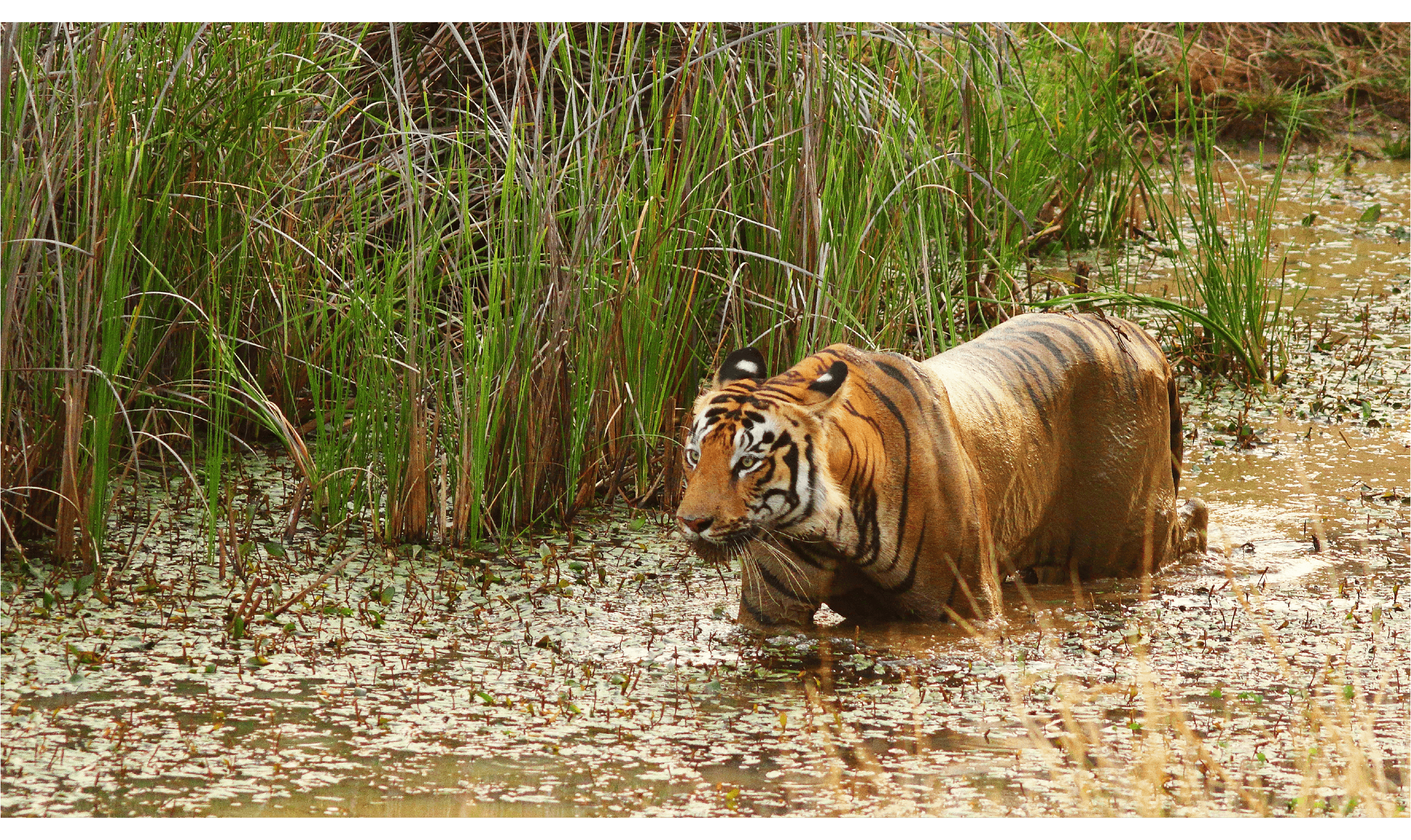
"WE HAVE LOST 97 % OF WILD TIGERS IN JUST OVERR A CENTURY"
"POACHING THREATENS THE LAST OF OUR WILD TIGERS THAT NUMBER AS FEW AS 3,200."
Historic vs Current Tiger Range
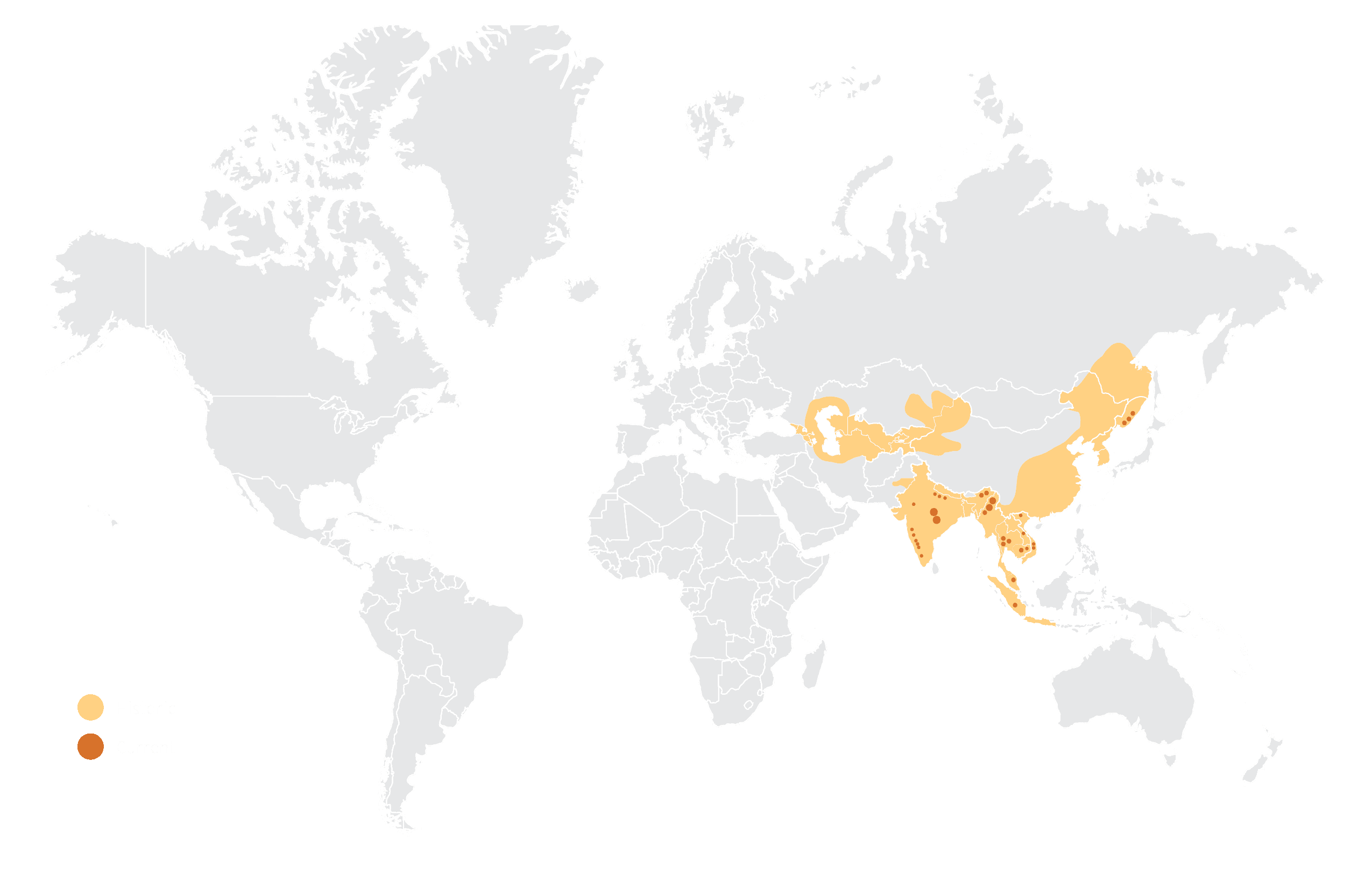
In the wild, tigers cling to survival in a few patches of forest scattered across Asia. A century ago 100,000 tigers roamed vast stretches of the Asian continent. Now, one of the world’s largest populations of tigers exists not in the wild—but in captivity in the United States. With an estimated 5,000 tigers, the U.S. captive tiger population exceeds the approximately 3,200 tigers in the wild.
Source: PBS. WWF. National Geographic. Image: Tiger (Panthera tigris) at Tadoba National Park, Maharashtra, India. Asif N Khan. CC BY-SA 4.0 via wikimedia commons.
WHAT IF WE RESTORED AND PROTECTED OUR FORESTS, WETLANDS, AND GRASSLANDS?
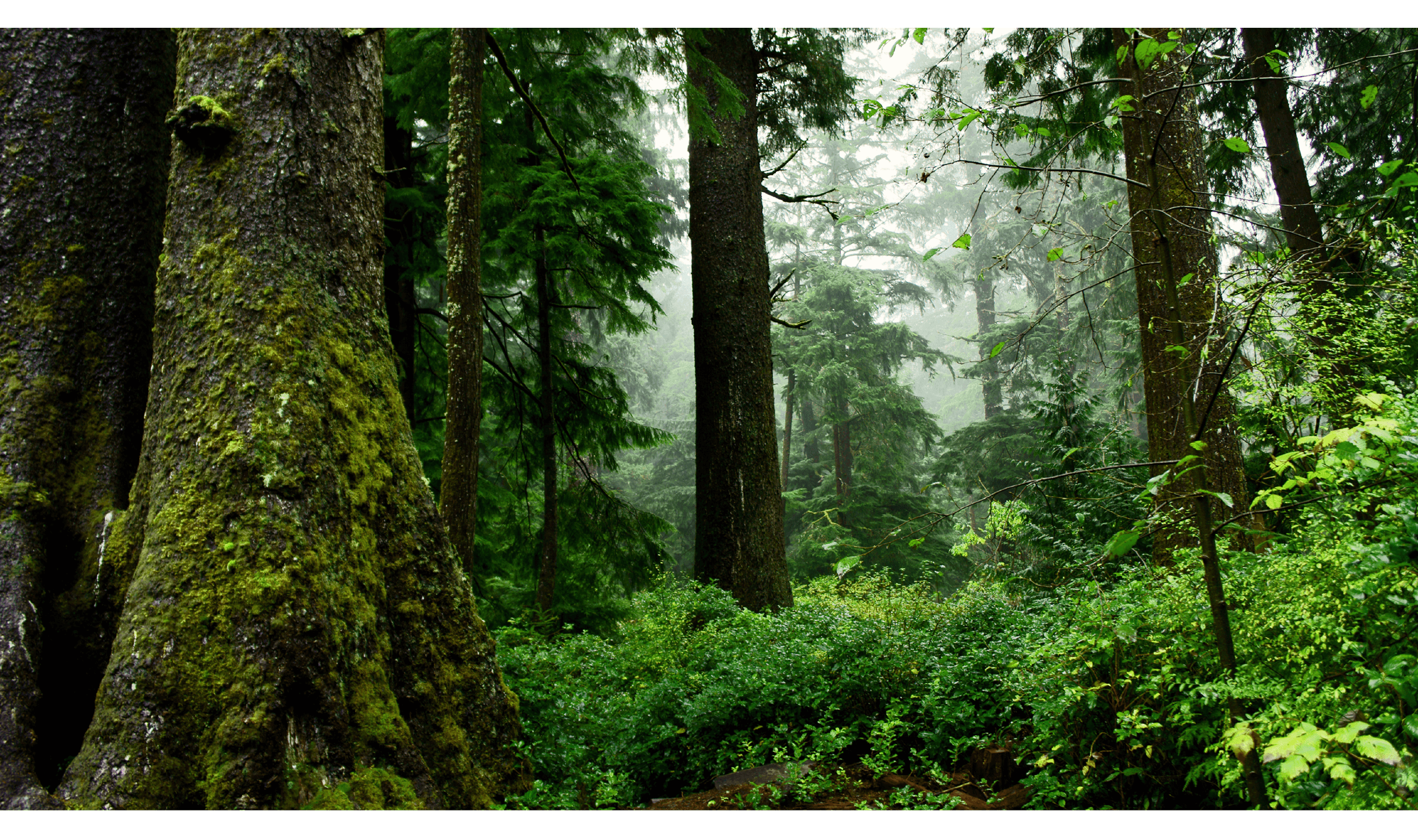
“Intact forests... sequester twice as much carbon as planted monocultures... Peatlands, tundra, mangroves and ancient grasslands are also important carbon storehouses...” Restoration and conservation could help offset emissions by 15-50% and preserve the most biodiverse places on the planet.
Source: “The Global Deal For Nature” Dinerstein et al. 2019. Image Source: David Patte/U.S. Fish and Wildlife Service. Offsets: estimated range compiled from Project Drawdown, “Natural Climate Solutions,” “Importance of Food Demand Management for Climate Mitigation” Bajzelj et al. 2014.
WHAT IF WE COULD PROTECT 30-50% OF GLOBAL OCEANS?

By rebuilding fish stocks with no-take zones, sustainably managed fisheries, and marine permaculture systems, we can protect 50% of our global oceans, increase productivity, and help combat ocean acidification.
Sources: Andrew Sharpless, Oceana. “Countries Where Fisheries are Sustainable” Oceanos. “Marine Permaculture” Drawdown, Climate Foundation.
LANDS & WATERS IN 2021

LANDS & WATERS IN 2100

WHAT IF WE COULD LEARN TO SHARE THE PLANET?
With conservation, restoration, and working lands reform, we can sustainably affect over 70% of terrestrial land and 50% of the oceans, increasing biodiversity and reducing greenhouse gas emissions.
Next solution



Learn about Maya Lin’s fifth and final memorial: a multi-platform science based artwork that presents an ecological history of our world - past, present, and future.

Discover ecological histories and stories of former abundance, loss, and recovery on the map of memory.

Learn how we can reduce our emissions and protect and restore species and habitats – around the world.

See how art can help us rethink the problems we face, and give us hope that each one of us can make a difference.

Help make a global memorial something personal and close to home. Share your stories of the natural world.